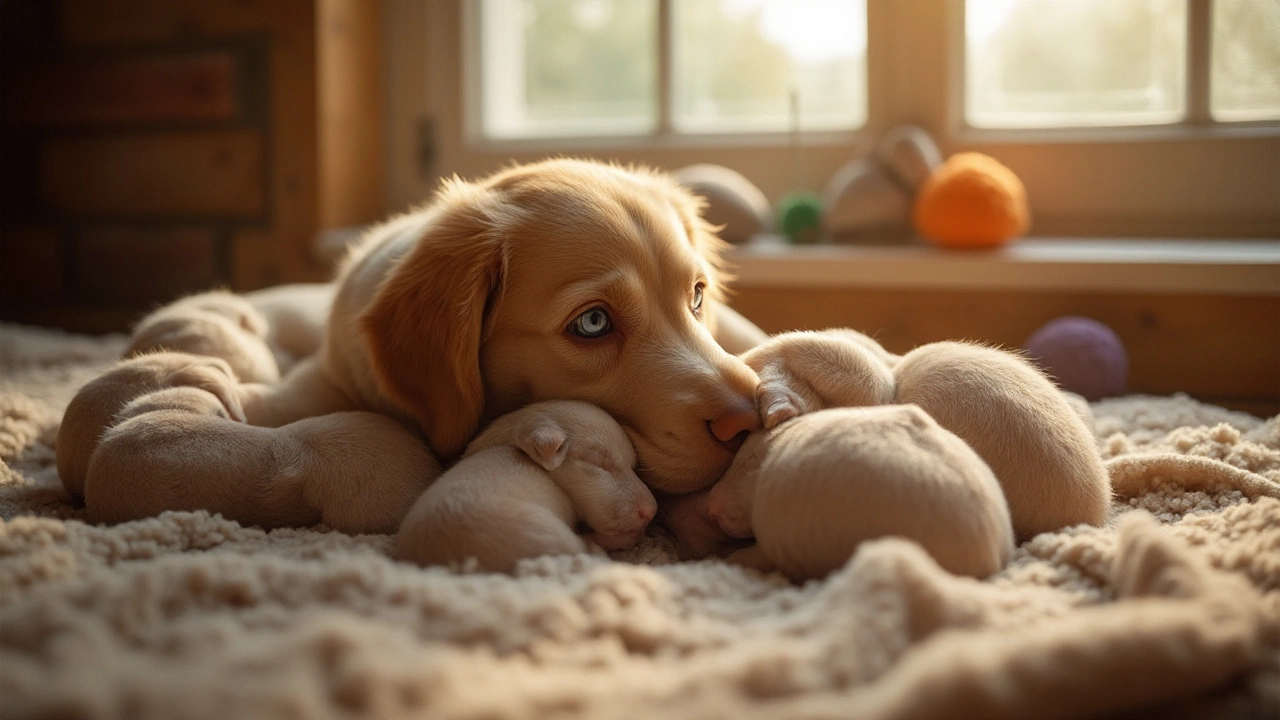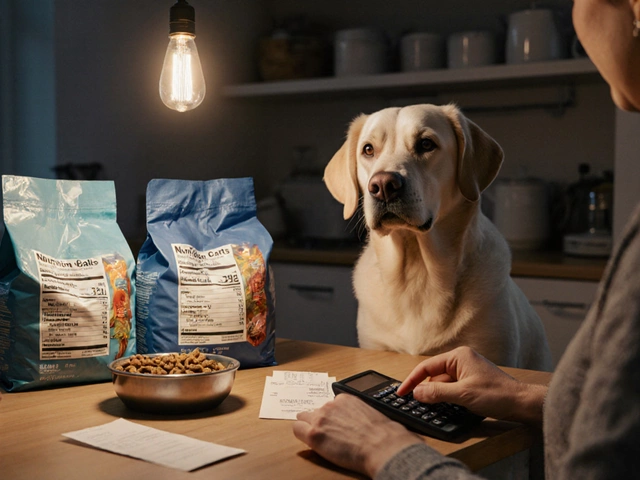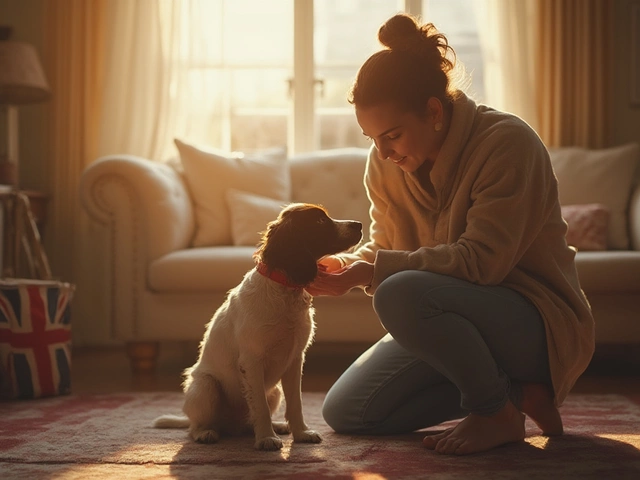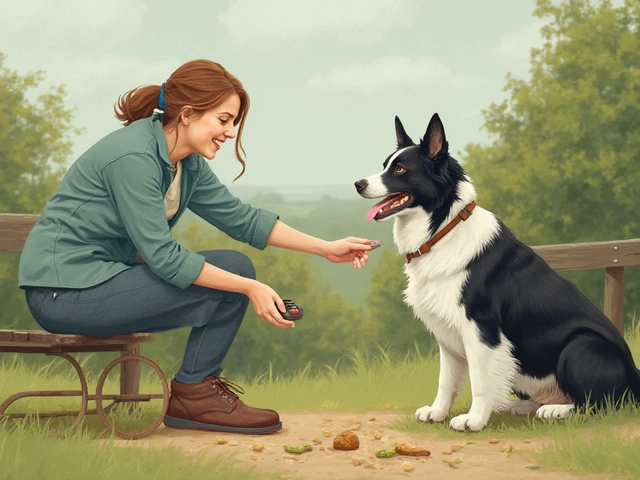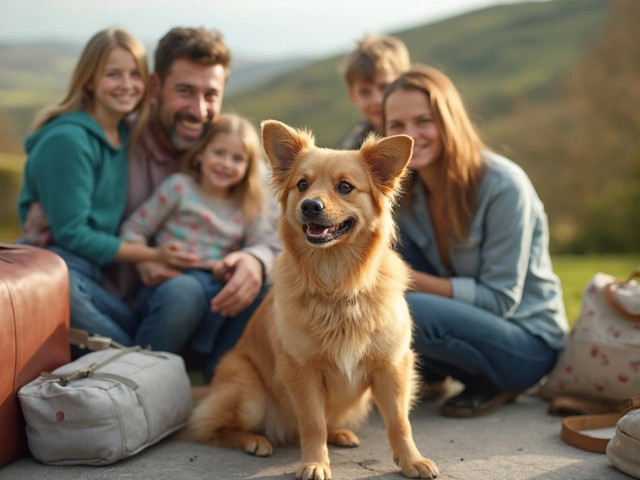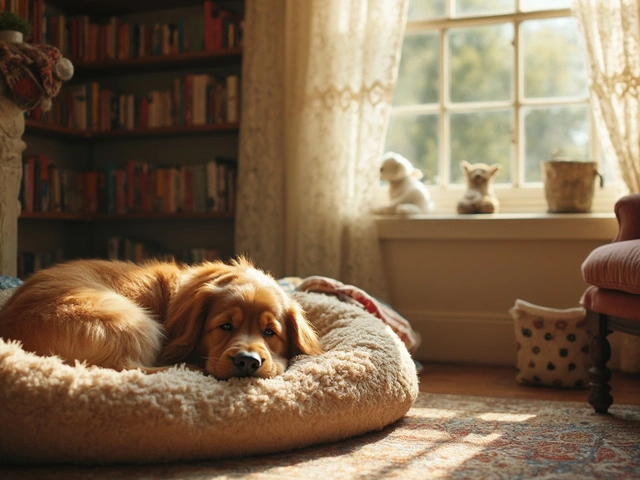Bringing a litter of puppies into the world is a joyous occasion, but it also comes with the responsibility of ensuring their safe upbringing. Newborn puppies, particularly those just three days old, are delicate creatures who need gentle care and attention. But when is it okay to touch them, and how can you do it safely?
Understanding the unique needs of these little ones during their first few days of life is crucial. From deciding when it's safe to handle them to choosing the right toys that aid their development, there are several things to consider. Creating a nurturing environment is key to supporting their early growth and fostering a healthy bond with their mother.
- The Fragility of Newborn Puppies
- When is it Safe to Touch Puppies?
- The Mother-Puppy Bond and Its Importance
- Choosing the Right Toys for Newborns
The Fragility of Newborn Puppies
Newborn puppies are delicate beings, experiencing the world for the first time. At merely three days old, these tiny creatures are in the initial stages of their journey, a period characterized by rapid growth and vital development. Their fragility can be attributed to several factors, including their undeveloped immune systems, inability to regulate body temperature, and the dependency on their mother’s care. During these early days, puppies are blind, deaf, and reliant on touch and scent to navigate their surroundings. These natural limitations highlight the need for a controlled environment that protects them from potential harm, ensuring they remain warm and sufficiently fed. Without such care, their health can quickly deteriorate, making this stage one of the most critical in their life.
Because they are still growing and developing, three-day-old pups require certain physical conditions to thrive. Their habitat must be kept at an optimal temperature, usually between 85°F and 90°F, as they cannot yet generate their own body heat. This is typically managed by their mother and the presence of an appropriate whelping box. Such care prevents any potentially life-threatening conditions, such as hypothermia. Yet, the environment is only one part of the equation. The mother dog plays a crucial role in offering needed nutrition through her milk, rich in antibodies that form the first barrier of defense for the puppies. Her attention also includes encouragement and instigation of essential behaviors like suckling, critical for their survival.
Cesar Millan, a renowned dog behaviorist, emphasizes the importance of allowing the mother and puppies time together without excessive handling from humans, stating, "In those early days, it's more about the puppy's adaptation to life and less about human interaction."
Understanding puppy fragility extends to being aware of their reactions to stimuli. At this age, even gentle handling can induce stress if performed too often or without care. Stress responses can cause disturbances in sleep patterns or feeding routines, both of which are essential for growth. While it is naturally tempting to interact with these newborn puppies, restraint is advised until they've grown stronger. Their mother's instinct not only nourishes but also calms them, reinforcing their sense of security. In their first days of life, the boundary between safety and harm is thin, underscoring the need for informed and gentle care.
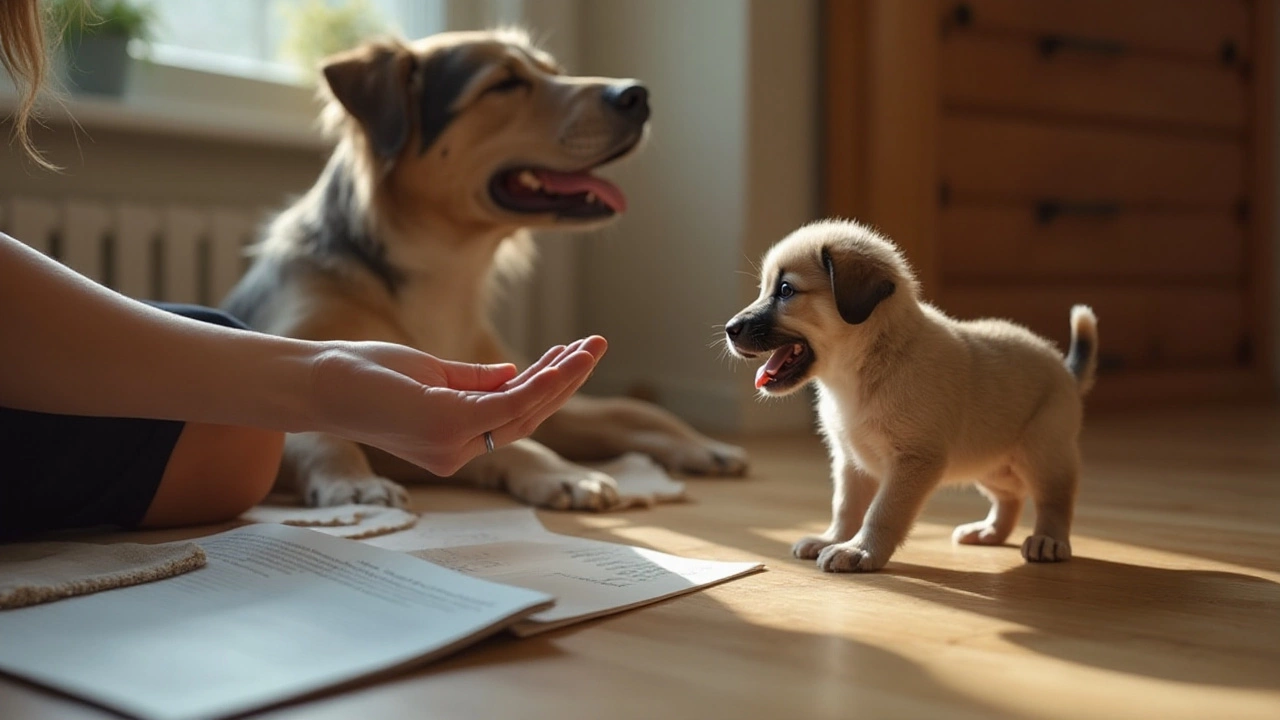
When is it Safe to Touch Puppies?
The decision to touch newborn puppies often leaves pet owners, particularly first-timers, with a sense of trepidation. It is natural to want to cuddle these tiny creatures, yet their fragility demands us to tread carefully. During the first few days of life, puppies are adjusting to their new environment and slowly developing their senses. Their skin is sensitive, and their immune systems are still in the formative stage, making them more susceptible to infections and stress. Most experts suggest waiting a week or more to handle puppies extensively, allowing their bodies to adapt while also maintaining the vital bond they have with their mother.
It is essential to observe the behavior of the mother dog too when considering if it's safe to touch the puppies. If she displays signs of stress or aggression, it's best to proceed with caution or delay handling until she is comfortable with your presence. During these early days, if touching the puppies is necessary—like weighing them or inspecting for any health issues—it should be done gently, ensuring your hands are clean and preferably warm to not startle them. Puppies are incredibly responsive to smell, so it may be beneficial for their wellbeing to rub your hands with a piece of cloth that carries their mother's scent and your own before touching them.
Interestingly, some studies point out that a little handling, in controlled and low-stress situations, might actually be beneficial for puppies. According to a publication from The University of Pennsylvania School of Veterinary Medicine, "Controlled exposure to human handling during the early stages can lead to positive behavioral traits in adult dogs."
Handling should be performed in a manner that is comforting rather than intrusive, ensuring short and successful interactions.However, it must be emphasized that this is not a one-size-fits-all recommendation, and the temperament of the mother and her litter can vary greatly.
When integrating handling into the puppies' routine, ensure that their exposure to humans aligns with their developmental progress. Limiting interactions to short periods initially ensures they do not become overstressed. Gradually increase the exposure time as they age and become more aware of their surroundings. It is equally important to pay attention to the room's environment when handling these newborn puppies—opting for a quiet, dimly lit room helps soothe both the mother and puppies, creating a more comforting environment for them. Too much noise or bright lights can disturb newborn puppies more than expected.
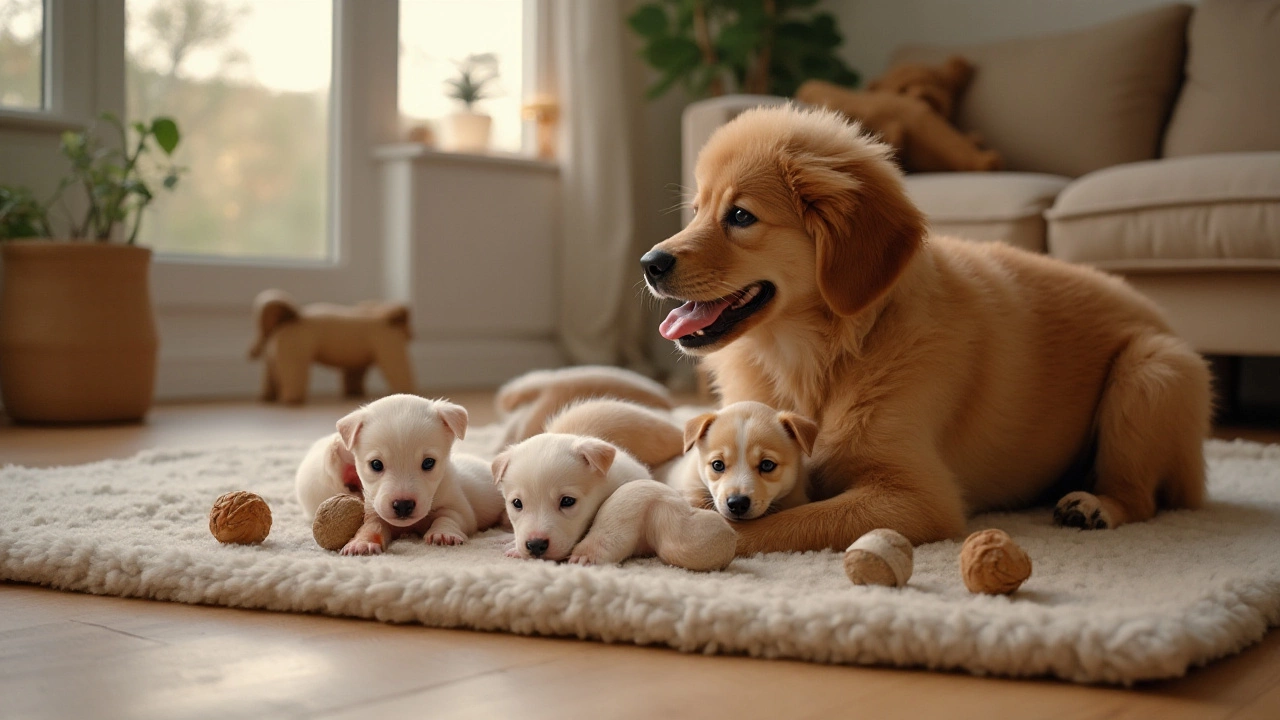
The Mother-Puppy Bond and Its Importance
The bond between a mother and her pups is one of the most crucial elements in a puppy's early development. During the first few weeks of life, a mother provides not just nourishment but also protection and warmth. Her presence reassures the puppies, reducing stress and promoting a sense of security in their new environment. This comfort facilitates their ability to thrive. Puppies learn to trust the world around them while they’re nestled in their mother’s care. They become accustomed to the rhythm of life, synchronized by her heartbeats and breaths. This bond sets the foundation for their trust in humans later on.
Interfering too much too soon may disrupt this delicate bond, which can cause distress for both the mother and her litter. Ensuring the mother feels safe and secure is important because her calm demeanor will be mirrored by the puppies. Stress can lead to a weakened immune system in puppies, making them susceptible to illness. Respecting this bond means allowing the mother and puppies some solitary bonding time, especially in the absence of any urgent need for intervention. There’s wisdom in a gentle approach; when touching and handling puppies, always be mindful of their need to be close to their mother.
The initial period, known as the neonatal stage, is when the mother spends most of her time tending to the puppies. This includes not only feeding them but also cleaning them, which is crucial for their hygiene and health. Interestingly, mother dogs have a unique way of communicating with their puppies through subtle sounds and touches. These interactions teach the puppies early lessons in communication and social cues, which will be important skills as they grow and interact with other dogs and humans. The maternal bond often becomes a blueprint for a puppy’s future interactions and temperament.
A mother's interaction does not only cater to physical needs but also establishes the puppies' emotional stability. Studies have shown that puppies raised in a nurturing environment where the mother-puppy bond is respected and maintained are more likely to develop into well-adjusted, confident adult dogs. This is why it’s sometimes advised to limit the number of interactions with the litter during those formative first weeks, giving them time to revel in the presence of their mother.
"Missing out on the primary bond with their dam can create fragility in the puppy’s confidence and sociability," says respected canine behaviorist Patricia McConnell.
Pet owners and breeders can provide newborn puppies with a comfortable and quiet space, ensuring the mother can attend her duties without disruption. Supplying appropriate puppy toys within reach can give mothers a helpful tool when they eventually start introducing basic motor skills to the puppies. While immediate handling is usually kept to a minimum, observing the changes and responses by the mother can indicate when it might be appropriate to begin gentle socializing sessions. All these considerations epitomize the importance of respecting the inherent beauty and necessity of the mother-puppy bond within a puppy's life.
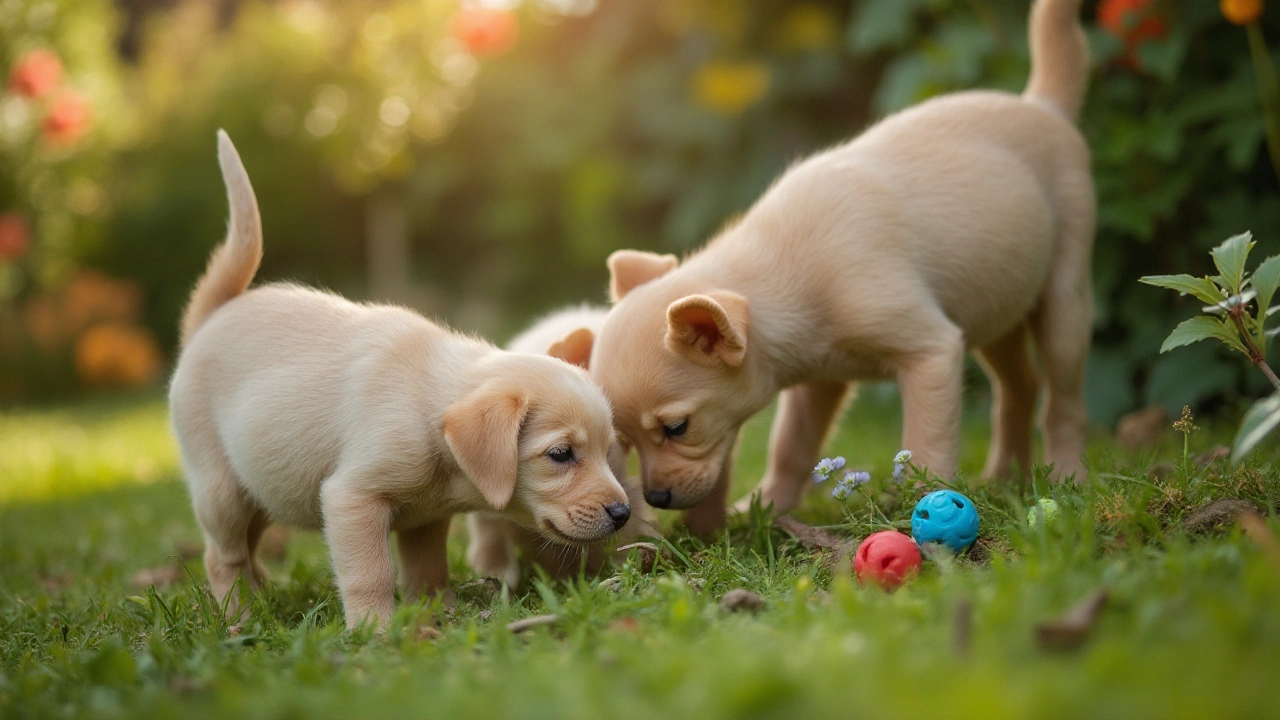
Choosing the Right Toys for Newborns
When it comes to picking toys for newborn puppies, the process is as much about comfort and safety as it is about play. At just three days old, puppies are deeply reliant on their senses to explore the world around them. However, their sense of vision is still developing. Thus, it’s wise to focus on toys that engage their more acute senses, like smell and touch. Soft, plush toys with various textures can provide a comforting presence, almost mimicking the warm feeling they get from cuddling with their littermates or their mother. Selecting the right toys is about enhancing their environment without causing any unnecessary stress or disruption.
It's important to note that at this stage, pups are more interested in sleeping and feeding than playing. Therefore, introducing toys too early may not be beneficial. A good tip is to observe the mother’s behavior and see how she interacts with her puppies. If she seems comfortable and unstressed, it's a sign that you can gently introduce toys like small stuffed animals or cloths that carry the mother's scent.
Safety is paramount when it comes to puppy care, so ensure the toys are free from small parts that could be swallowed or choked on. It’s worth investing in toys specifically designed for newborns, as these have been tested for safety and appropriateness. Toys should be regularly cleaned to prevent the spread of bacteria, which is crucial for maintaining the health of these tiny creatures. As celebrated animal behaviorist Temple Grandin emphasizes,
"Animals make us human. Understanding their needs at each developmental stage enriches our bond with them."
While it might be tempting to surround your new furry friends with a plethora of toys, less is often more. To enhance cognitive development, you can introduce toys slowly, monitoring how the puppies react and ensuring they are always in a safe, controlled environment. Toys that produce gentle sounds and have a variety of textures can stimulate mental growth once they become more active, but always under close supervision.
Interestingly, research shows that puppies introduced to enriched environments with different kinds of toys tend to be more adaptable and exhibit fewer behavioral issues as they mature. A study by the American Kennel Club highlighted the impact of early-life enrichments on a puppy's ability to cope with new situations. As such, considering a mix of simple, soothing toys now, while planning for more interactive ones as they grow, can create a stimulating world for your little ones.
